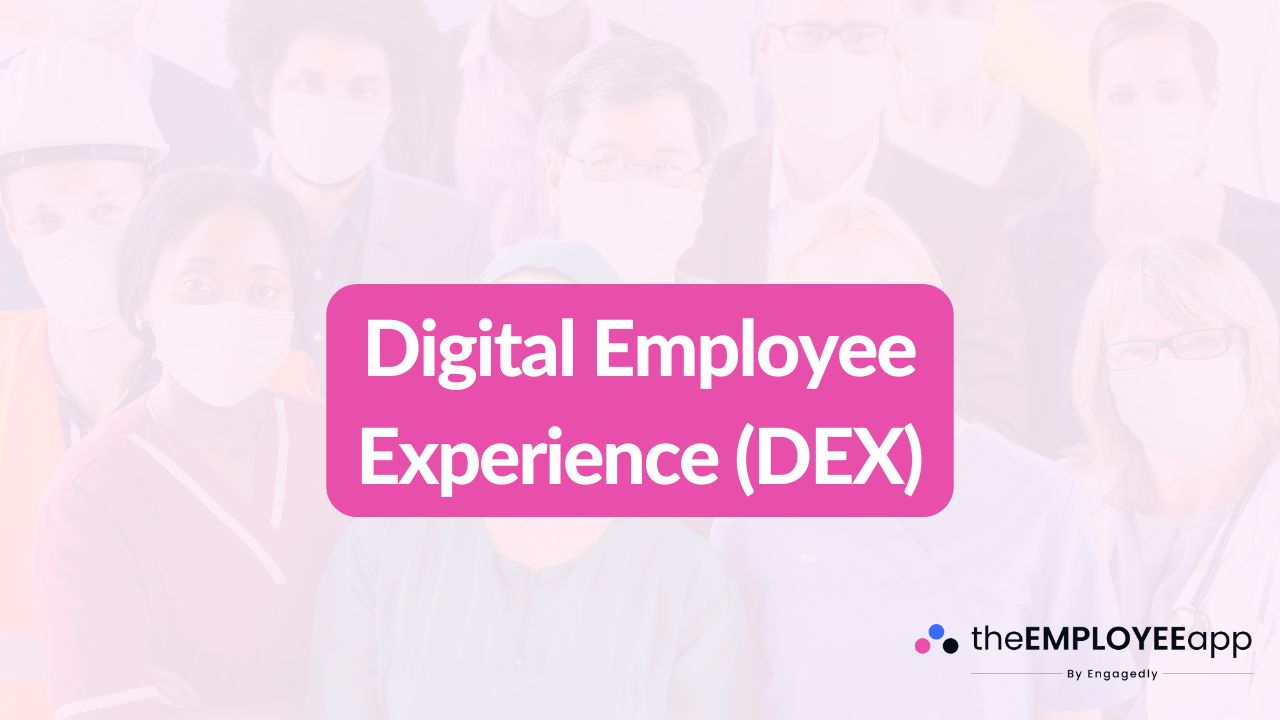
Digital Employee Experience (DEX) refers to how employees interact with the digital tools, platforms, and technologies provided by their organization. It covers every aspect of how employees use technology to perform tasks, access information, communicate with teams, and manage workflows. A strong DEX ensures that employees have a seamless, efficient, and satisfying digital work environment, which directly impacts productivity, engagement, and retention.
At its core, digital employee experience is about how easy and effective it is for employees to work within the digital ecosystem of a company. This includes everyday interactions such as logging into systems, using collaboration platforms, accessing HR portals, or completing training modules. If these experiences are smooth, intuitive, and reliable, employees are empowered to focus on their roles instead of battling with frustrating technology.
For frontline workers, who may rely primarily on mobile devices or shared kiosks, DEX is even more critical. Their ability to clock in, receive updates, and complete tasks efficiently often depends on having reliable and user-friendly digital tools.
A positive digital employee experience goes beyond convenience. It plays a central role in shaping overall employee satisfaction and organizational success. Employees today expect workplace technology to be as intuitive as the apps they use in their personal lives. When digital tools are outdated or complicated, frustration builds, productivity drops, and employees may disengage.
On the other hand, when organizations invest in optimizing DEX, they create an environment where technology becomes an enabler rather than a barrier. This leads to higher adoption of digital tools, stronger collaboration, and better performance across teams.
Ease of Access
Employees should be able to access systems quickly without complex login processes. Tools like single sign-on (SSO) improve this aspect of DEX.
Usability and Design
Digital platforms must be intuitive and easy to navigate, reducing the learning curve and saving time.
Performance and Reliability
Slow or unreliable systems are among the biggest frustrations for employees. High-performing digital tools build trust and efficiency.
Integration Across Tools
When apps and platforms are integrated, employees spend less time switching between systems and more time focusing on their work.
Support and Training
Even the best tools require training and support. Accessible resources help employees maximize their use of technology.
Mobile Accessibility
Especially for frontline employees, mobile-friendly solutions are vital for staying connected and informed on the go.
Higher Productivity: Streamlined tools reduce wasted time and improve efficiency.
Improved Engagement: Employees feel supported and empowered when technology works for them.
Better Collaboration: Integrated communication platforms enhance teamwork and knowledge sharing.
Reduced Turnover: Frustration with outdated systems is a common reason for dissatisfaction; improving DEX helps retention.
Stronger Customer Outcomes: Happy, empowered employees deliver better service to customers.
Despite its importance, many organizations struggle with DEX. Common challenges include:
Over-reliance on too many disconnected apps
Lack of mobile access for frontline teams
Security measures that add friction to workflows
Insufficient employee input in choosing digital tools
These issues can create barriers and lead to disengagement if not addressed.
Organizations can enhance DEX by adopting practical strategies:
Consolidate platforms to reduce app overload.
Use single sign-on (SSO) for simpler and more secure logins.
Invest in mobile-first technology for frontline accessibility.
Collect regular employee feedback to understand pain points.
Offer continuous training so employees can fully utilize digital tools.
Monitor performance metrics to identify gaps in system usability or speed.
As technology evolves, so too will DEX. Artificial intelligence, automation, and predictive analytics will increasingly shape the employee experience. Tools will become more personalized, helping employees complete tasks faster and more effectively. Organizations that prioritize digital employee experience today will be better prepared to adapt to future changes and maintain a competitive advantage.
The digital employee experience (DEX) is more than just a tech initiative—it’s a key driver of employee engagement, productivity, and business outcomes. By ensuring that digital tools are intuitive, reliable, and accessible, organizations can empower their employees to do their best work. Investing in DEX is ultimately an investment in the workforce, customer satisfaction, and long-term organizational success.
